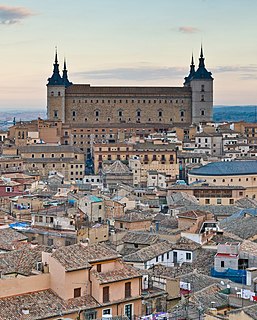 W
WThe Siege of the Alcázar was a highly symbolic Nationalist victory in Toledo in the opening stages of the Spanish Civil War. The Alcázar of Toledo was held by a variety of military forces in favor of the Nationalist uprising. Militias of the parties in the Popular Front began their siege on July 21, 1936. The siege ended on September 27 with the arrival of the Army of Africa under Francisco Franco.
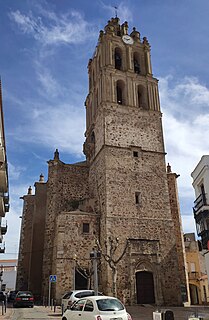 W
WThe Battle of Almendralejo was a battle and massacre in Almendralejo, Spain, in August 1936, during the first stages of the Spanish Civil War.
 W
WThe Asturias Offensive was an offensive in Asturias during the Spanish Civil War which lasted from 1 September to 21 October 1937. 45,000 men of the Spanish Republican Army met 90,000 men of the Nationalist forces.
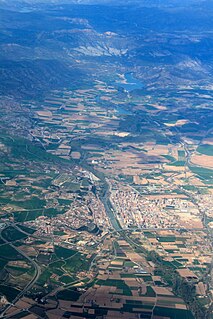 W
WThe Balaguer Offensive was an offensive carried out by the Spanish Republican Army around Balaguer during the Spanish Civil War. The offensive consisted in a series of counterattacks in the spring and summer of 1938 after the disastrous Aragon Offensive. The offensive was a failure for the Spanish Republic and many lives and military material were wasted.
 W
WThe Battle of Irún was the critical battle of the Campaign of Gipuzkoa prior to the War in the North, during the Spanish Civil War. The Nationalist Army, under Alfonso Beorlegui, captured the city of Irún cutting off the northern provinces of Gipuzkoa, Biscay, Santander, and Asturias from their source of arms and support in France.
 W
WThe Battle of Seseña was an ill-fated Republican-Soviet assault on the Nationalist stronghold of Seseña, near Toledo, 30 km south of Madrid in October 1936 during the Spanish Civil War. After the fall of Talavera de la Reina and Toledo in September 1936, the Nationalist troops pushed towards Madrid and in October they were 30 km from the city. The Republican government which had received new Soviet weapons decided to launch a counteroffensive in order to stop the Nationalist offensive at Seseña. The attack failed and the Nationalists resumed their advance towards Madrid. The battle is notable for being the first time that tank warfare was seen in the Spanish War and for the use by Nationalist troops of Molotov cocktails against Soviet T-26 tanks.
 W
WThe Battle of Belchite refers to a series of military operations that took place between 24 August and 7 September 1937, in and around the small town of Belchite, in Aragon during the Spanish Civil War.
 W
WThe Battle of Bielsa pocket took place between 14 April and 15 June 1938, during the Spanish Civil War. After the fall of the Aragon front, a Republican division, in April 1938, was surrounded by the Nationalists in the Cinca River Valley. The division, despite being heavily outnumbered, managed to hold until 6 July and then crossed the French frontier.
 W
WThe Battle of Bilbao, part of the War in the North in the Spanish Civil War, had the Nationalist Army captured Bilbao and the rest of the Basque Country that was still being held by the Republic.
 W
WThe Biscay Campaign was an offensive of the Spanish Civil War which lasted from 31 March to 1 July 1937. 50,000 men of the Eusko Gudarostea met 65,000 men of the insurgent forces. After heavy combats the Nationalist forces with a crushing material superiority managed to occupy the city of Bilbao and the Biscay province.
 W
WThe Bombing of Barcelona was a series of Fascist Italian and Nazi German airstrikes supporting the Franco-led Nationalist rebel army, which took place from 16th through 18th March 1938, during the Spanish Civil War. Up to 1,300 people were killed and at least 2,000 wounded. It is considered the first carpet bombing from air in history.
 W
WThe Battle of Brunete, fought 24 kilometres (15 mi) west of Madrid, was a Republican attempt to alleviate the pressure exerted by the Nationalists on the capital and on the north during the Spanish Civil War. Although initially successful, the Republicans were forced to retreat from Brunete and suffered devastating casualties from the battle.
 W
WThe Campaign of Gipuzkoa was part of the Spanish Civil War, where the Nationalist Army conquered the northern province of Gipuzkoa, held by the Republic.
 W
WThe Cartagena uprising took place 4–7 March 1939 during the Spanish Civil War. The troop transport SS Castillo de Olite was sunk during the revolt.
 W
WThe Catalonia Offensive was part of the Spanish Civil War. The Nationalist Army started the offensive on 23 December 1938 and rapidly conquered Republican-held Catalonia with Barcelona. Barcelona was captured on 26 January 1939. The Republican government headed for the French border. Thousands of people fleeing the Nationalists also crossed the frontier in the following month, to be placed in internment camps. Franco closed the border with France by 10 February 1939.
 W
WThe Battle of Cerro Muriano took place during the Spanish Civil War in 1936.
 W
WThe Bombing of Durango took place on 31 March 1937, during the Spanish Civil War. On 31 March 1937 the Nationalists started their offensive against the Republican held province of Biscay. As part of the offensive the Aviazione Legionaria and the Legion Condor bombed Durango, a town of 10,000 inhabitants that was also a key road and railway junction behind the frontline. Around 250 people are believed to have died in the bombing.
 W
WThe final offensive of the Spanish Civil War took place between 26 March and 1 April 1939, towards the end of the Spanish Civil War. On 5 March 1939, the Republican Army, led by Colonel Segismundo Casado and the politician Julián Besteiro, rose against the Socialist prime minister Juan Negrín, and formed a military junta, the National Defence Council to negotiate a peace deal. Negrín fled to France but the Communist troops around Madrid rose against the junta, starting a civil war within the civil war. Casado defeated them and started peace negotiations with the Nationalists. Francisco Franco, however, was prepared to accept only an unconditional surrender. On 26 March, the Nationalists started a general offensive and by 31 March, they controlled all of Spanish territory. Hundreds of thousands of Republicans were arrested and interned in concentration camps.
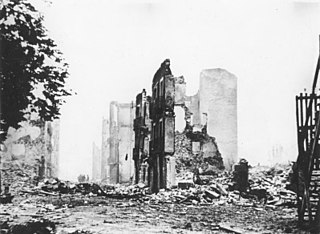 W
WThe bombing of Guernica was an aerial bombing of the Basque town of Guernica during the Spanish Civil War. It was carried out, at the behest of Francisco Franco's rebel Nationalist faction, by its allies, the Nazi German Luftwaffe's Condor Legion and the Fascist Italian Aviazione Legionaria, under the code name 'Operation Rügen'. The operation opened the way to Franco's capture of Bilbao and his victory in northern Spain.
 W
WThe Siege of Gijón, one of the first actions in the Spanish Civil War, saw the anarchist militia crushing a small Nationalist garrison in Gijón, between July 19 and August 16, 1936. The militia - nominally fighting in defense of the Republic - laid siege to the Simancas barracks in the city of Gijón. These were defended by about 180 soldiers and Guardia Civil officers who had risen in support of General Franco's rebellion and seized the post for the Nationalists. The battle was remarkable for its viciousness and the stubbornness of the besieged.
 W
WThe Battle of Guadalajara saw the People's Republican Army defeat Italian and Nationalist forces attempting to encircle Madrid during the Spanish Civil War. The Nationalist forces involved in the Battle of Guadalajara were primarily the Italian Corps of Volunteer Troops.
 W
WThe Battle of Guadarrama was a battle involving troops loyal to the Second Spanish Republic in the Guadarrama Range at the beginning of the Spanish Civil War.
 W
WThe Battle of Jarama was an attempt by General Francisco Franco's Nationalists to dislodge the Republican lines along the river Jarama, just east of Madrid, during the Spanish Civil War. Elite Spanish Legionnaires and Moroccan Regulares from the Army of Africa forced back the Republican Army of the Centre, including the International Brigades, but after days of fierce fighting no breakthrough was achieved. Republican counterattacks along the captured ground likewise failed, resulting in heavy casualties to both sides.
 W
WThe July 1936 military uprising in Barcelona was a military uprising in Barcelona, the capital and largest city of Catalonia, Spain on 19 July 1936 which contributed to the start of the Spanish Civil War. Most of the army officers in the city supported the coup, but the Civil Guard, the Assault Guard and the Mossos d'Esquadra remained loyal to the government. Furthermore, Barcelona was one of the strongholds of the anarchist union, the Confederación Nacional del Trabajo (CNT). The rebel troops were defeated after bloody combat.
 W
WThe July 1936 military uprising in Melilla occurred at the start of the Spanish Civil War. The rebels seized the main garrisons of the Spanish Army in Africa and by 18 July had crushed the resistance of the army officers loyal to the Republican government. The supporters of the Second Spanish Republic were detained or shot.
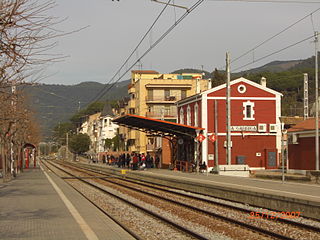 W
WThe Bombing of La Garriga where a series of Nationalist air raids which took place at La Garriga, Barcelona province in Catalonia between 28 and 29 January 1939 during the Spanish Civil War. At least 13 civilians were killed in the bombings.
 W
WThe siege of the Loyola barracks was a siege and uprising at the military barracks in the Loyola neighborhood of San Sebastián, Spain, on 21 July 1936. It was part of the Spanish coup of July 1936 against the Second Spanish Republic, which led to the start of the Spanish Civil War.
 W
WThe Siege of Madrid was a siege of the Spanish capital city of Madrid, during the Spanish Civil War of 1936 to 1939. The city, besieged from October 1936, fell to the Nationalist armies on 28 March 1939, after two-and-a-half years. Madrid was held by various forces loyal to the Spanish Republic and was besieged and subject to aerial bombardment by the rebel faction under General Francisco Franco. The Battle of Madrid in November 1936 saw the most intense fighting in and around the city when the Nationalists made their most determined attempt to take the Republican capital.
 W
WThe Battle of Majorca, also known as the Majorca Landings, was an amphibious landing of Republican forces early in the Spanish Civil War aimed at driving the Nationalists from Majorca and reclaiming the island for the Republic. After some initial tactical success, the expedition, commanded by Captain Alberto Bayo, ended in failure when the Nationalists counterattacked with ground troops and massively superior air power and drove the Republicans into the sea. So confident were the Republicans in their prediction of victory they optimistically called the operation "la reconquista de Mallorca" - "the reconquest of Majorca".
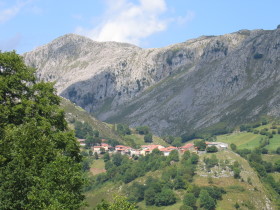 W
WThe Battle of El Mazuco was fought between 6 and 22 September 1937, between the Republican and Nationalist armies during the Spanish Civil War as a part of the War in the North campaign. The Republican defence of El Mazuco and the surrounding mountains halted the Nationalist advance into eastern Asturias, despite their forces being outnumbered sevenfold. After weeks of intense fighting over extreme terrain the defenders were eventually overwhelmed, and the Nationalists were then able to link up with their forces advancing from León, leading to the fall of Gijón and the abandonment of Asturias, the last Republican province in North-West Spain.
 W
WThe Battle of Menorca took place in Menorca between the 7 and 9 February 1939 during the Spanish Civil War.
 W
WThe battle of Mérida pocket, also known as the Closing of Mérida pocket, was an action that took place during the Spanish Civil War in July 1938 in La Serena zone of Badajoz Province. A swift and decisive operation, it was masterminded and carried out by the Francoist military and ended up becoming a bloodbath for the Republican troops.
 W
WThe siege of the Montaña barracks was the two-day siege which marked the initial failure of the July 1936 uprising against the Second Spanish Republic in Madrid, on 18–20 July 1936, at the start of the Spanish Civil War. The bulk of the security forces in Madrid remained loyal to the government, and supported by workers' militias, crushed the uprising.
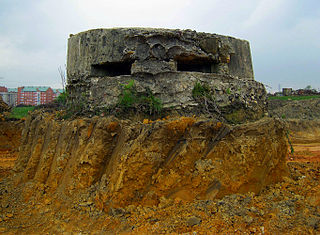 W
WThe Siege of Oviedo was a siege in the Spanish Civil War that lasted from July 19 until October 16, 1936. The town garrison, under the command of Colonel Antonio Aranda Mata, declared for the Nationalist uprising and held out until relieved by a Nationalist force.
 W
WThe Battle of Santander was a battle fought in the War in the North campaign of the Spanish Civil War during the summer of 1937. Santander's fall on August 26 assured the Nationalist conquest of the province of Santander, now Cantabria. The battle devastated the Republic's "Army of the North"; 60,000 soldiers were captured by the Nationalists.
 W
WThe Segovia Offensive was a Republican diversionary offensive which took place between 31 May and 6 June 1937, during the Spanish Civil War. The main goal of the offensive was to occupy Segovia and divert Nationalist forces from their advance on Bilbao. After a brief initial advance the offensive failed due to Nationalist air superiority.
 W
WThe Battle of the Sierra Guadalupe, also known as the Tagus Campaign, was a continuation of the Nationalist Army's race north toward Madrid in the early stages of the Spanish Civil War. In mid-late August 1936, the three Regulares columns of General Yagüe's Army of Africa dashed through the Sierra de Guadalupe Mountains, also known as Sierra de Villuercas, in central Spain and forded across the Tagus River, capturing several towns and routing the Republicans in a succession of rapid advances.
 W
WThe Battle of Teruel was fought in and around the city of Teruel during the Spanish Civil War between December 1937 and February 1938, during the worst Spanish winter in 20 years. The battle was one of the bloodiest actions of the war, with the city changing hands several times by first falling to the Republicans and eventually being retaken by the Nationalists. In the course of the fighting, Teruel was subjected to heavy artillery and aerial bombardment. Both sides' combattants suffered a total of over 140,000 casualties in the two-month battle.
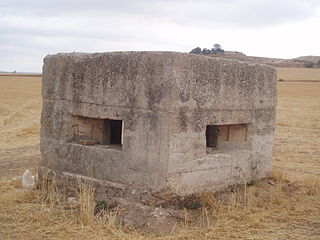 W
WThe Battle of Segre is the collective name of a series of battles that took place along the Segre River between 4 April 1938 and 3 January 1939 during the Spanish Civil War, after the Nationalist Faction had broken the lines of the Spanish Republican Army in the Aragon Offensive.
 W
WThe Battle of Valsequillo, also known as Battle of Peñarroya, was a diversionary Republican offensive which took place in the Sierra Morena area in southern Extremadura and the north of Andalusia between 5 January and 4 February 1939 during the Spanish Civil War. The main goal of the offensive was to distract forces from the Nationalist offensive against Catalonia, but after having occupied 500 square kilometers the Republican advance was stopped and all the territorial gains were lost to a Nationalist counteroffensive.
 W
WThe War in the North was the campaign of the Spanish Civil War in which the Nationalist forces defeated and occupied the parts of northern Spain that had remained loyal to the Republican government.
 W
WThe Levante Offensive, launched near the end of March 1938, was an attempt by Nationalist forces under Francisco Franco to capture the Republican held city of Valencia during the Spanish Civil War. The Nationalists occupied the province of Castellón, but the offensive failed due to bad weather and the dogged resistance of the Republican troops at the XYZ defensive line.
 W
WThe XYZ Line, or Matallana Line, was a system of fortifications built during the Spanish Civil War in order to defend the capital of the Second Spanish Republic in Valencia, Spain. Unlike the Maginot Line, or the Iron Belt of Bilbao, which were expensive systems of fortifications and bunkers made of reinforced concrete, the XYZ Line was a simpler system of defenses in depth consisting of trenches and bunkers that took advantage of some of the most difficult terrain in Spain in the Iberian System ranges to the north and northeast of Valencia. The defenses were built to withstand bombardment by either heavy artillery or 1,000-pound aerial bombs.